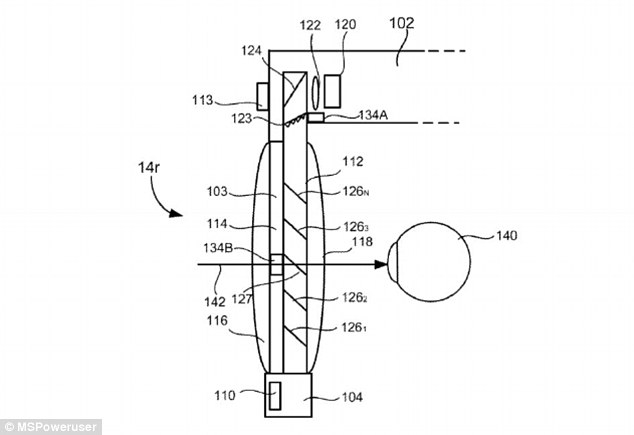
This Oct. 30, 2015 file photo shows a 24-foot version of inventor Buckminster Fullers Flys Eye Dome on display in Miami’s Design District. A 50-foot version of the futuristic dome is scheduled to be installed on the grounds of the Crystal Bridges Museum of American Art in Bentonville, Ark., in the summer of 2017. (AP Photo/Wilfredo Lee)
BENTONVILLE, Ark. (AP) — A massive geodesic dome with 61 glass eyes is coming to Arkansas’ Crystal Bridges Museum of American Art.
The structure, called Fly’s Eye Dome, was designed by the late Buckminster Fuller, who was known for his futuristic inventions and who hoped it would revolutionize housing. Museum curators say Fuller was inspired to design the dome after looking at a photo of a fly’s eye.
The dome will join a 1950s home designed by Frank Lloyd Wright that became part of the museum’s collection in 2015.
Demonstrating innovation in American architecture is part of the museum’s mission.
The 50-foot-wide Fly’s Eye Dome, made of glass and fiberglass, will appear on the museum’s north lawn like a massive golf ball caught in the grass.
“It is shocking and people are going to go, ‘What is that?’” said Dylan Turk, a curatorial assistant at Crystal Bridges who worked on the Wright installation. “Hopefully they’ll go out there and want to know what it is.”
He said the dome “marks an incredible moment in American architecture history — innovation and thinking outside the box.”
Wright’s and Fuller’s homes provide different perspectives on how to be at one with nature. Wright’s Bachman-Wilson home, with a prominent glass wall, immerses visitors into the landscape along Bentonville’s Crystal Spring.
Fuller’s home features 61 “oculi,” or eyes, through which to see the world. More than 11 dozen panels — most of them triangles — fill the spaces between the eyes.
“We have an actual piece of paper where he had a picture of a fly that he had found in a newspaper in the ’60s,” Turk said. “He saw it and thought, ‘The structure of this fly’s eye could become one of my type of domes.’ He was literally looking at a fly’s eye.”

This computer illustration provided by the Crystal Bridges Museum of American Art on Dec. 28, 2016, shows a rendering of how inventor Buckminster Fuller’s Fly’s Eye Dome will look when installed on museum grounds in Bentonville, Ark. (Jessi Mueller/Crystal Bridges Museum of American Art via AP)
Three prototypes were built before Fuller died in 1983. The 50-footer was previously displayed at the Los Angeles Bicentennial celebration in 1981 and at the Festival International d’Art in Toulouse, France, in 2013. The other two were 24 and 12 feet wide.
In an announcement to patrons in its magazine “C,” the museum said Fuller considered his design a way to address global housing needs through “a beautiful, fully equipped, air-deliverable house that weighs and costs about as much as a good automobile.”
“He wanted to use the lightest materials possible because it costs the least to ship and uses less energy to build,” said Turk. “Fiberglass is strong and cheap.”
Crystal Bridges was founded by Wal-Mart heiress Alice Walton. The museum was designed by another prominent architect, Moshe Safdie.
Crystal Bridges has acquired Fuller’s papers, is studying them and has loaned some material to the Fay Jones School of Architecture at the nearby University of Arkansas.
Fuller died before fully explaining how to lay out, heat or cool the dome’s interior space. “We hope to potentially evolve what Fuller intended to do to see if there is a more efficient way of designing it, or a new technology now that we can embrace Fuller’s spirit and make it more efficient,” Turk said.
While it’s far different from the Wright home, the museum calls the Fuller dome a step in its quest to define uniquely American architecture.
“Efficient, affordable, at one with nature: all of these factors were key in the concept and development of both architects’ ideals,” the museum says in its thrice-yearly magazine. It quotes architectural historian Robert Rubin, who recovered Fuller’s dome from storage in 2001, as saying the “Eurocentrism” of U.S. architectural history “needs to be corrected.”
The dome will stand along trees and a sculpture garden out of view of the Wright home, near where the museum is developing a new entrance.
If You Go…
CRYSTAL BRIDGES MUSEUM OF AMERICAN ART: Located in Bentonville, Arkansas. The Fuller dome will be installed summer 2017. For other exhibits, including the Wright house: Saturday-Sunday, 10 a.m.-6 p.m.; Monday 11 a.m.-6 p.m.; Wednesday-Friday, 11 a.m.-9 p.m. Free general admission includes Wright house, though the number of admissions is limited and tickets are required. Visit crystalbridges.org
KELLY P. KISSEL, Associated Press
[“source-ndtv”]

